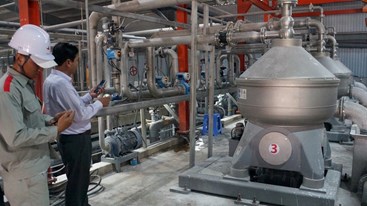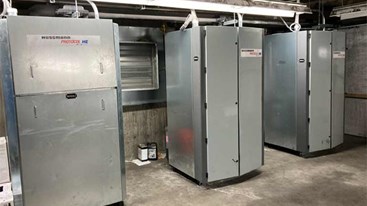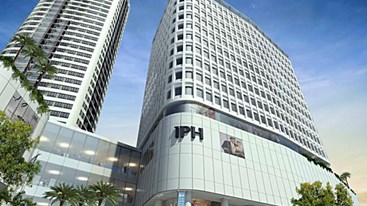Saturday, 13/12/2025 | 17:28 GMT+7
The ferry is reportedly the first all-electric battery-powered car and passenger ferry in the world. The battery-powered vessel, with a comfortable capacity of 120 cars and 360 passengers operating at about 10 knots, is apparently in service 365 days per year.

Originating as a submission to a Norwegian Ministry of Transport competition, this innovative vessel won a 10-year license to operate the Lavik-Oppedal route beginning in 2015. The planet-friendly, water-friendly design of Ampere came out ahead of all other competitors.
“We are both optimistic and excited about this technology and how it will help shape the future of environmentally friendly maritime technology,” says Mario Azar, CEO of the Siemens Business Unit Oil & Gas and Marine. “We were pleased to apply our expertise in this field including electric propulsion systems to such a worthwhile project,” added Azar.
Siemens cites differences in the building process from many electric vehicles, saying the emission-free ferry was formed from the ground up. The ferry is 80 meters long and 20 meters wide. With a svelte catamaran hull, quite lightweight and made of aluminum, the vessel features an all-electric powertrain, with two electric motors with 450 kilowatts of output each. Steel is ordinarily used in shipbuilding. Thus, the ferry is just half as heavy as a conventional ferry — even with its 10-ton batteries and a capacity for 360 passengers and 120 vehicles. Doubling the lifetime of the hull, the aluminum hull also leaves behind the maintenance required of a steel hull.

Siemens shares that the lovely Ampere is designed and built by Fjellstrand shipyard. Siemens provides the battery technology to this shipyard, which is set appropriately on the southwest coast of Norway. Norled owned the Ampere and named the design of the ferry for its holding capacity of 120. However, “ZeroCast 120″ design is most definitely named for its 100% emissions-free operations.


Siemens assessed that the power grid in the region was not well developed. Siemens and Norled chose to install three battery packs. Each pier has one lithium-ion battery as well as one on board the ferry. Thus, turnaround times are an opportunity for the ferry to recharge at the pier — recharging in just 10 minutes.

Hydropower supplies the lithium-ion battery charging stations at the piers with electricity. The ferry’s use of 150 kilowatt-hours (kWh) per route equals about three days’ use of electricity in a typical Norwegian household. Check out the batteries on board (below) — the equivalent of 1,600 standard car batteries according to Siemens.
This battery pack onboard, like the ones on each pier, corresponds to the effect of 1600 standard car batteries. The charging at each peer takes only ten minutes.

Siemens adds that the energy management system (EMS) interface involves sub-controllers for gensets, thrusters, and remote controls to watch and optimize engine speed. A seamless performance of the vessel smoothly runs thanks to the entirely joint working of the ship’s genset, switchboard, propulsion, and thruster control systems.
On board the ferry, Siemens installed its electric propulsion system, BlueDrive PlusC. “It includes a battery and steering system, thruster control for the propellers, an energy management system, and an integrated alarm system. The integrated automation systems control and monitor the machinery and auxiliaries on the ferry and are connected via Profibus to all other subsystems.”
Mai Linh








 Enhancing capacity to develop and implement energy efficiency policies at local level
Enhancing capacity to develop and implement energy efficiency policies at local level
 Bosch Vietnam Plant Benefits from Investment in Energy Efficiency
Bosch Vietnam Plant Benefits from Investment in Energy Efficiency
 Webinar 2: “Financial Support for Energy Efficiency Enterprises – Opportunities and Challenges”
Webinar 2: “Financial Support for Energy Efficiency Enterprises – Opportunities and Challenges”
 Vietnamese enterprises achieve green growth and cut costs through energy efficiency
Vietnamese enterprises achieve green growth and cut costs through energy efficiency
 Promoting Energy Efficiency for Technical Staff of Brick and Ceramic Sector
Promoting Energy Efficiency for Technical Staff of Brick and Ceramic Sector
 Capacity Building for Program Implementing Entity
Capacity Building for Program Implementing Entity
 Enhance Energy Efficiency Knowledge for Managers of Cement Industrial Enterprises
Enhance Energy Efficiency Knowledge for Managers of Cement Industrial Enterprises